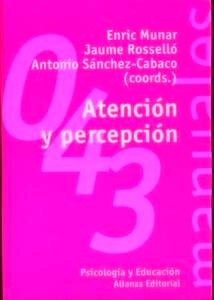Reseña o resumen
Written by physicians skilled at coaching colleagues in physician-patient communication, this pocket guide presents practical strategies for handling a wide variety of difficult patient interviews.
Each chapter presents a hypothetical scenario, describes effective communication techniques for each phase of the interaction, and identifies pitfalls to avoid. The presentation includes examples of physician-patient dialogue, illustrations showing body language, and key references.
This edition includes new chapters on caring for physician-patients, communicating with colleagues, disclosing unexpected outcomes and medical errors, shared decision making and informed consent, and teaching communication skills. Other new chapters describe clinical attitudes such as patience, curiosity, and hope.
FEATURES:
Drs. Platt and Gordon are practicing internists with clinical and academic careers in doctor-patient communication. They are members of the American Academy on Physician and Patient (AAPP), and the Bayer Institute For Health Care Communication
Chapters are organized around topics identified by AAPP members as important and problematic
Includes personal expertise of authors
Each chapter follows a consistent format: Problem, Principles, Procedure, Pitfalls, and Pearls. (5 P's)
NEW TO THIS EDITION:
This edition includes new chapters on caring for physician-patients, communicating with colleagues, disclosing unexpected outcomes and medical errors, shared decision making and informed consent, and teaching communication skills.
The topics address skills found in the core ACGME competencies of interpersonal and communication skills, professionalism, and patient care, and is cited in the ACGME resource toolbox
The book has short, pithy chapters written for busy residents and practitioners, with updated references and new chapters on teaching and coaching communication skills.
Contents
The Efficient Interview
Basic Interviewing Technique
Listening
Building Rapport: EMPATHY, the Universal Tool
Understanding Nonverbal Communication
The Primacy of Symptoms
Culture and Language
The Efficient Interview: Dealing with Patient Emotions
Sadness and Fear
Anger
Ambivalence
Explaining
Patient Education
Giving Bad News
Comforting the Grieving Family: Survivors of a Patient Death
Shared Decision-Making and Informed Consent
The Clinical Attitude
Patience
Curiosity
"OK" and "Wow": The Short Words
Self-awareness: What Are You Thinking Now?
Hope
Dealing with a Difficult Relationship
Those Dreaded Phases
Acknowledging Difficult Relationships and Interactions
Understanging the Meaning of Illness
Addressing Disagreements About Diagnosis or Therapy
Trust and Distrust
Establishing Boundaries
Avoiding Seduction
Asking for Help
Clinician-to-Clinician Communication: Talking to Colleagues
Doctors Firing Patients - Patients Firing Doctors
Illness and Loss
Chronic Pain and Suffering
Somatization
The Transition from Disease-Based Care to Palliative Care
End-of-Life Discussions: Advance Care Plans and DNR Orders
Being with a Dying Patient
Talking with Families of Seriously Ill Patients
Who's in Charge Here: Behavioral Health Risks
Assesing Risk Behaviors
Nonadherence
Violence
Alcohol Use
Sex
Puzzling Problems
The List-Maker
The Patient's Companion
Confusion: Communicating with the Cognitively Impaired Patient
The Patient Bearing Literature
When Your Patient is a Doctor
Disclosing Unexpected Outcomes and Errors
Coaching Communication Skills
Appendix: Selected Readings for the Entire Text
INDEX

